Mind Mapping, or how to make your brain work better

“If you don’t break your brains, you break the wood”
There are dozens, and maybe hundreds of methods for “pumping” of your brain, because it harbors many possibilities, access to which is often limited to us. “Eat bitter chocolate”, “Hang stickers all over the house”, “Start with the most important things” and many other tips can be found on the Internet, the essence of which boils down to one thing - to push our brain to fast work, to start it to its fullest or even “Cheat”. And all for maximum benefit - to do a lot of things, remember more information, win laziness and so on. Man has always tried to get the most out of his abilities.
In the 80s of the twentieth century, another such method was invented - the Mind Mapping technology or the use of mental maps. And as practice shows, the method is far from the worst, and worthy of attention.
In this article we will consider the following questions:
- What is a mental map?
- How to create a mental map?
- Are there any programs for creating mental maps?
- What to read on this topic?
For those who like to listen more than read - my interesting (hopefully) report on GetDev :
What is a mental map?
What is this technology?
“In this world, to stand still, you need to run”
The use of mental maps is a technique of visualization of thinking, with the help of which it is possible to process some information better and more efficiently. Mental maps have many different names:
')
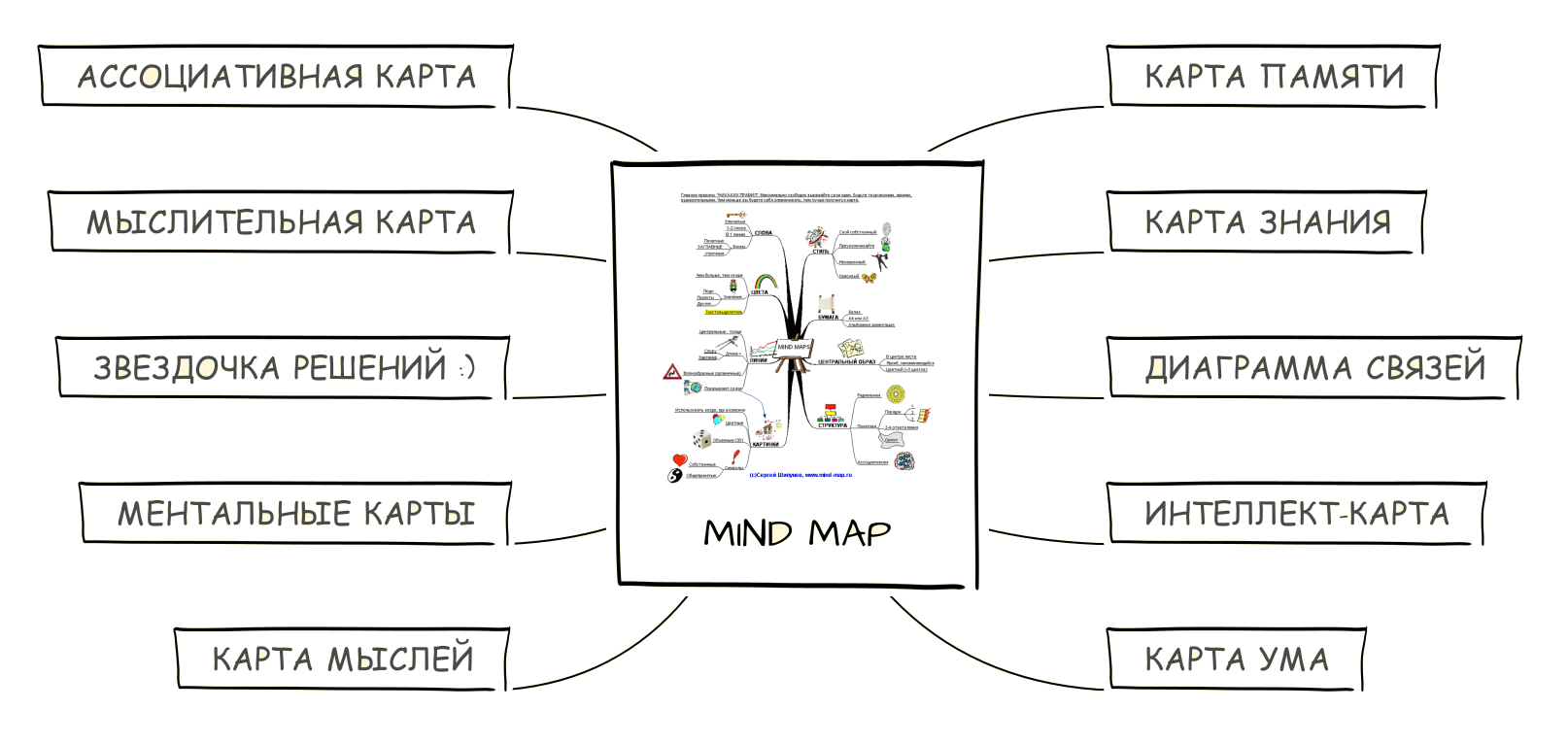
The technology is widely used for many purposes:

- Fixing information. Mental maps - a convenient form of data recording, which allows even with a large amount to present it in a capacious form.
- Memorization of information. When you write something in a convenient light form, it is automatically put off in your head.
- Easy access to information. The data recorded in the form of mental maps, it is easy to recall, even after casting them only one glance.
- Analysis of information. The mental map is constructed in such a way that allows you to see previously unnoticed communication between its parts, small unrecorded details, which is very valuable when making decisions. Also, with its help, you can view all the information as a whole, in a comprehensive way, which generally helps to understand the topic and better understand this data.
Mental maps help to easily operate with information, which makes them very useful in many areas of our life:
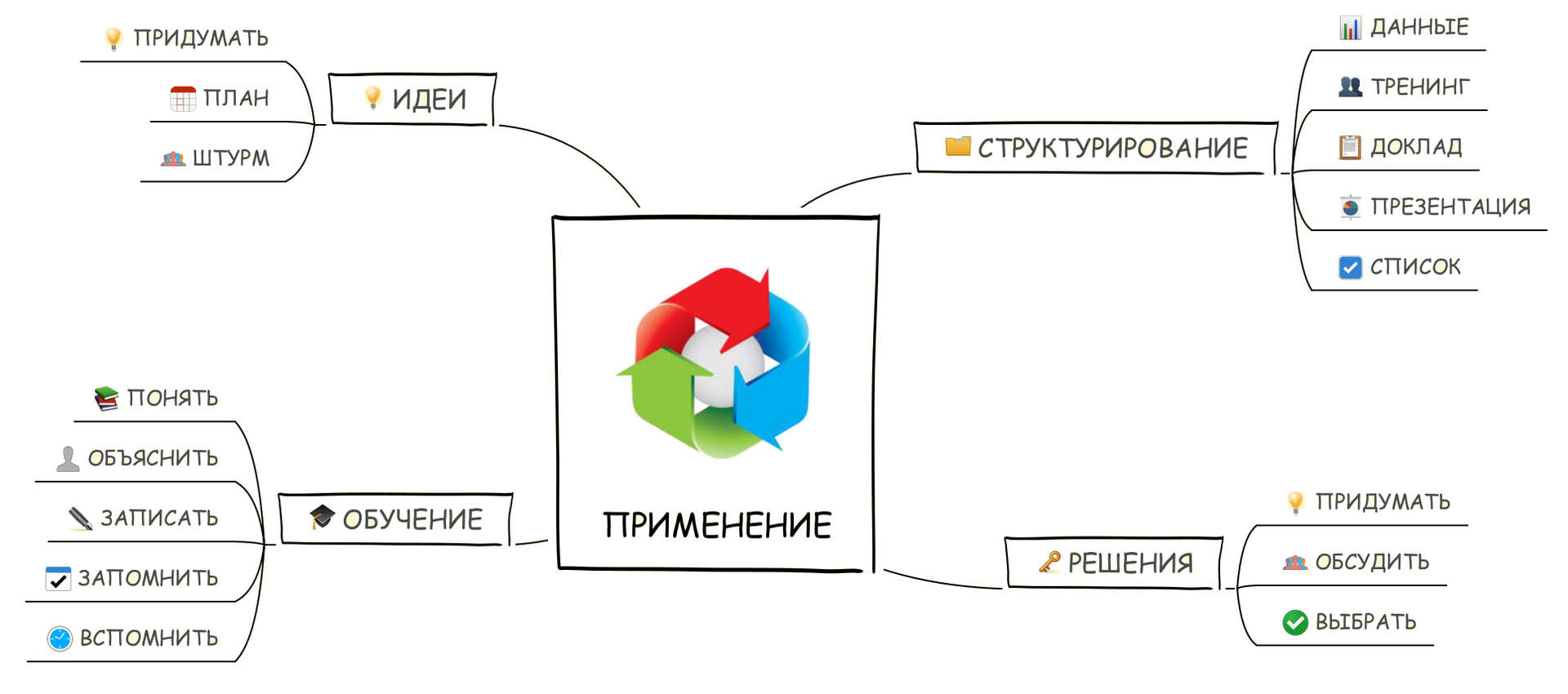
Why use it?

“The thought repeated twice is well remembered.
The thought repeated twice is well remembered. ”
Mental maps help when working with any data, improve the brain's ability to perceive information, but why?
The first reason lies in the very construction of the map - it is depicted in a radial form, the key image is in the center, and further branches diverge from it. This simplifies the flow of information into the brain - after all, we also see the world around us as a whole - the central image and the details around it.

The second reason also lies in the processing of information by our brain - visualization in general improves perception . Words with pictures, we memorize 6 times better than just words.
When building a mental map , various abilities of our thinking are activated . In drawing up branches and keywords, we use hierarchies; for pictures, visualization and associative thinking, in general, spatial-figurative thinking is used. All this activates the memory and allows you to remember both the data structure and its important aspects, so the use of mental maps improves the memorization of information by about 32% .
Since we use various thinking abilities to build mental maps, such as creativity, logic, imagination , they all develop and improve in the process .
Since mental maps reflect the whole picture, it allows you to establish all the relationships between objects, even if initially they were not so obvious. In turn, this leads to the emergence of a new point of view on information, as well as new ideas and thoughts. The structure and logic of the data become more “transparent”, easy to understand and remember.
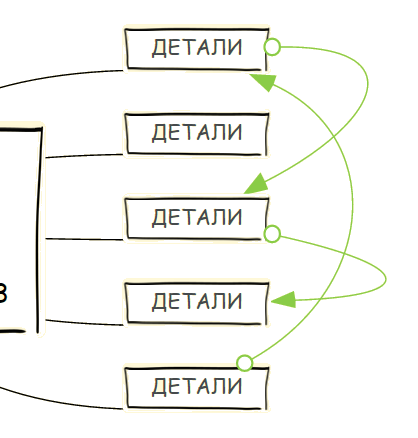
Another indisputable argument in favor of using mental maps is that it is very easy to learn this technique , and it is possible to remember information with its help immediately, in large numbers and very effectively. It takes little to write while saving time significantly .

What are the differences from regular recordings?
“Clarity gives focus”
Line recording is the primary form of recording information that we use in school, university, work, and in many many institutions. It is used in instructions, books, posters and generally everywhere. Therefore, the use of such a form seems logical, convenient and correct.
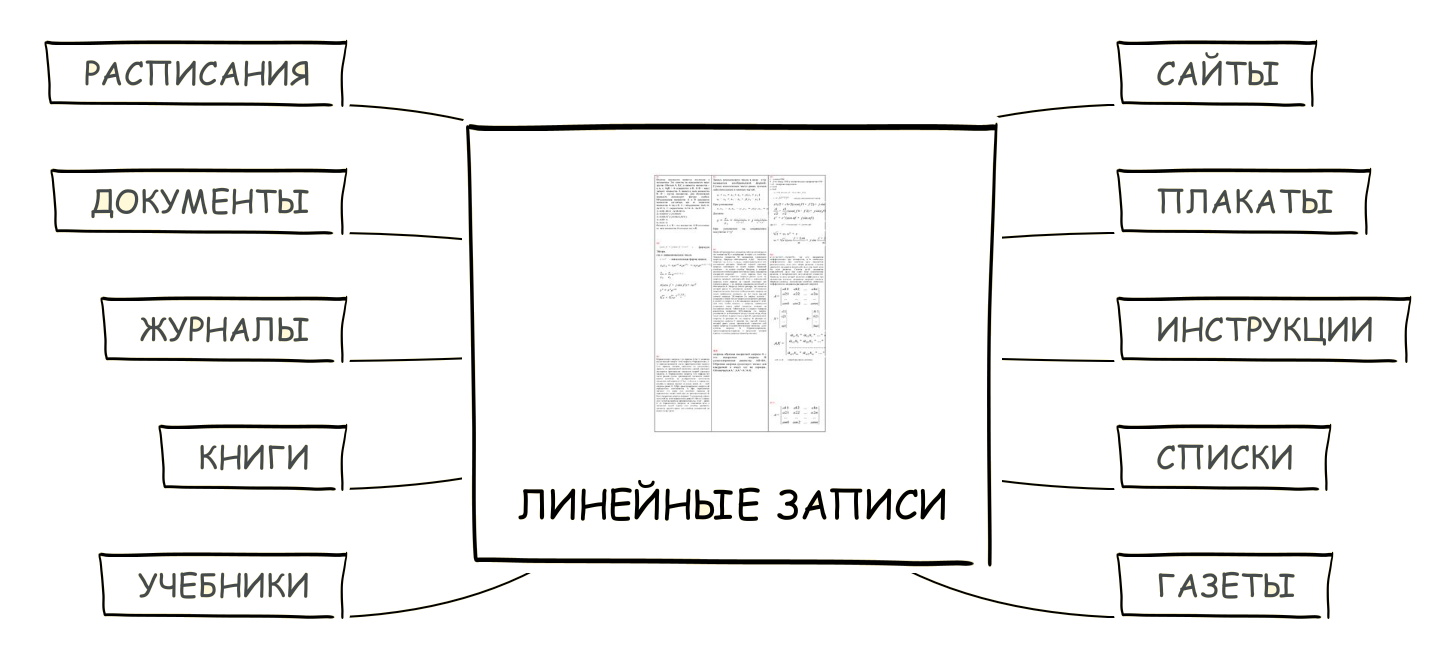
But can it only be a matter of habit? There are some differences between linear recordings and mental maps, which may make it worth changing your habits.

- The entire structure of the vertical textual information is rather hard to see , and in order to view everything, additional actions may be required, such as page turning or page scrolling. And the cards are built on a circular principle, and with one glance you can capture all that is depicted.
- The linear list is “psychologically” incomplete , it can be continued, which prevents us from perceiving it holistically. The complete map has all the elements in its place, it is thought out, arranged and complete.
- Our brain is not the best way to remember monotonous records , in contrast to the various pictures, colorful branches and colorfully decorated keywords.

- In ordinary recordings, it is rather difficult to single out the most important thought ; it is lost in the numerous lists, highlighted and underlined words. On the mental map, the main object of study is always in the center, and it is from it that the secondary branches and additional information diverge.
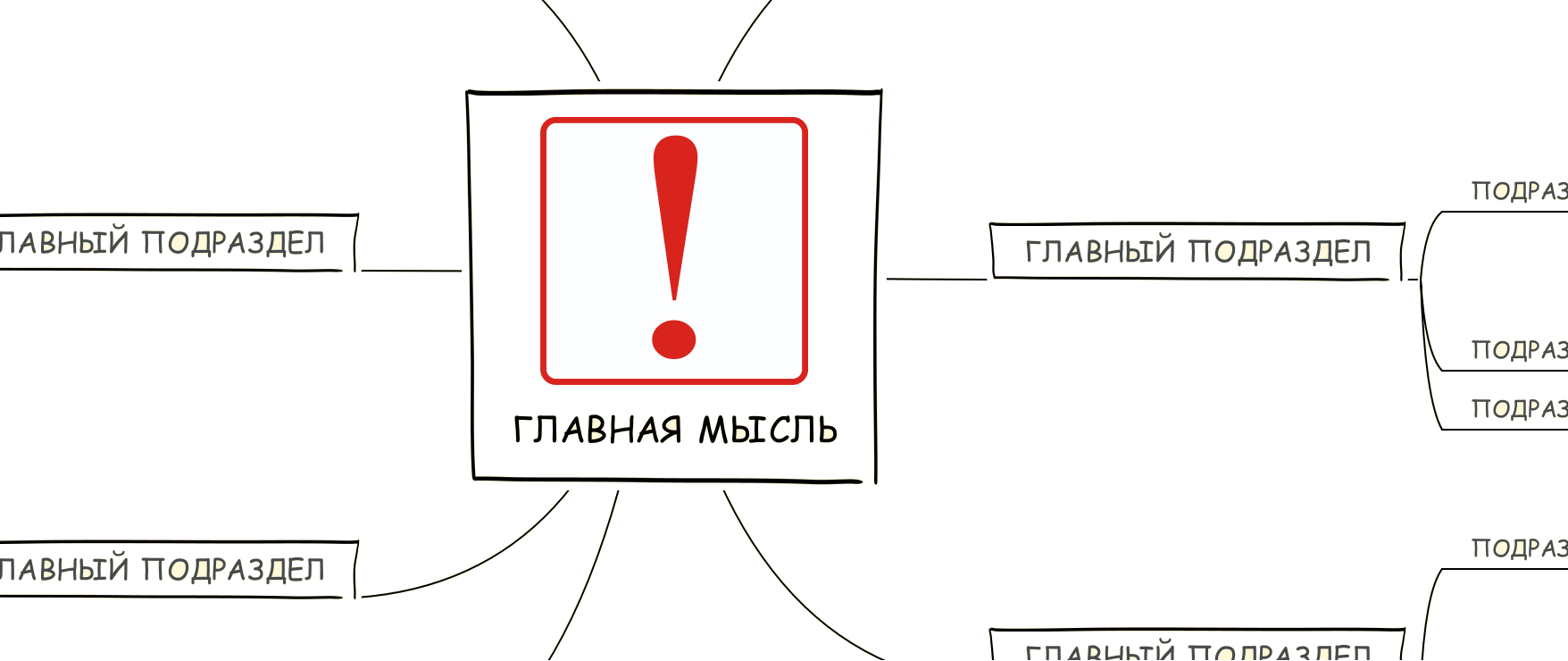
- Since we use visualization to build a mental map, we use the right hemisphere of the brain, which is responsible for aesthetics and thinking about the problem as a whole. Due to this, we can think about the image on the map from different sides. With linear recordings, such engagement of the right hemisphere of the brain is minimal .

- Linear records take a lot of time , because a person doesn’t write very quickly by hand. We have to shorten the words, they are not always written clearly, and this is at the expense of the quality of the records.
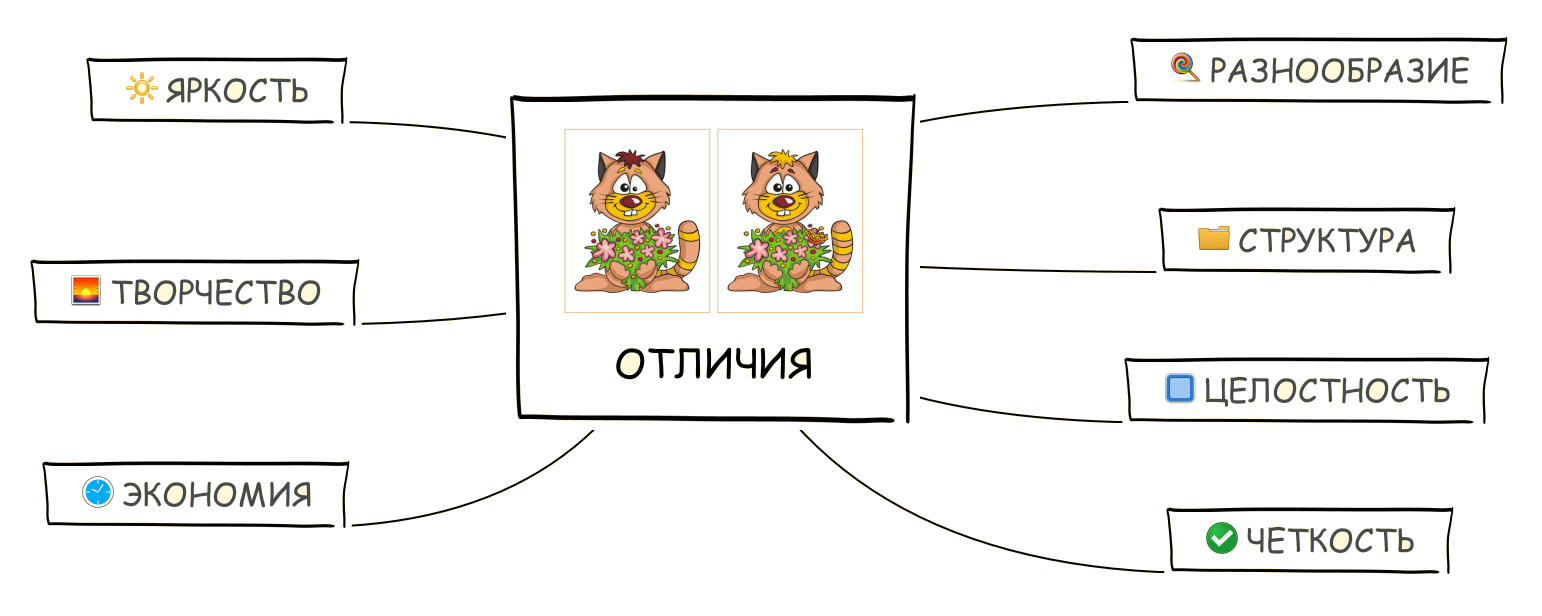
Are mental maps popular?
Who came up with mental maps?

Analogues of various communication diagrams were used from a fairly early time, but the creator of the modern method of mental maps, such as we know it now, is Tony Busen - an English psychologist, author and coauthor of more than 80 books, the most famous of which are considered “Supermind think yourself. " The first book, describing the technique of mental maps, was published in 1974 - “Work your head”.
Here is how the author describes the events that prompted the development of this technique:
“In my time in the second year of university, I somehow went to the library and asked if they had books on the theory of the brain and its practical capabilities. The librarian, without hesitation, sent me to the department of medical literature!
When I explained that I was not going to do brain operations, but only to use it correctly, they politely replied that they apparently did not have such books in the library.
I went out in complete amazement.
Like my other fellow students, I was in a condition known to any average student: a growing awareness that as the workload grows, your brain is increasingly losing ground over high demands on thinking, creativity, memory, problem solving, analysis and compose ”in the course of written work. Like the others, I increasingly came across the phenomenon when the return from schoolwork falls, despite the efforts made, and sometimes it seems to be completely zero. The paradox was that, as I thought, the more I outlined and taught, worse was the result!
The logical consequence of both possible strategies of action in that situation was, as it seemed to me, a dead end. Become me less effort, the mass of important information falls into the category of the not learned, and, as a result, the failure of the exam. If I continued with even more perseverance, outlining in more detail and spending more time on it, the result would be the same downward spiral of success.
The key to true success, I finally reasoned, should be sought in answering the question of how rationally I use my intelligence in general and thinking abilities in particular — an awareness of this led me to the library.
When I got out of it that day, it suddenly occurred to me that the problem I faced, not finding the right literature, might have come in handy. Since such books have not yet been written, I have stepped into a reserved area, where there is genuine space for an inquiring mind. ”
Are they used in the world?
Over time, the feasibility of a particular technique is always determined by the number of people who use it. Since the release of the first description of the technique, more than 40 years have passed, but nevertheless the technique of mental maps lives, develops, and, most importantly, is used. Turn to Google Trends:
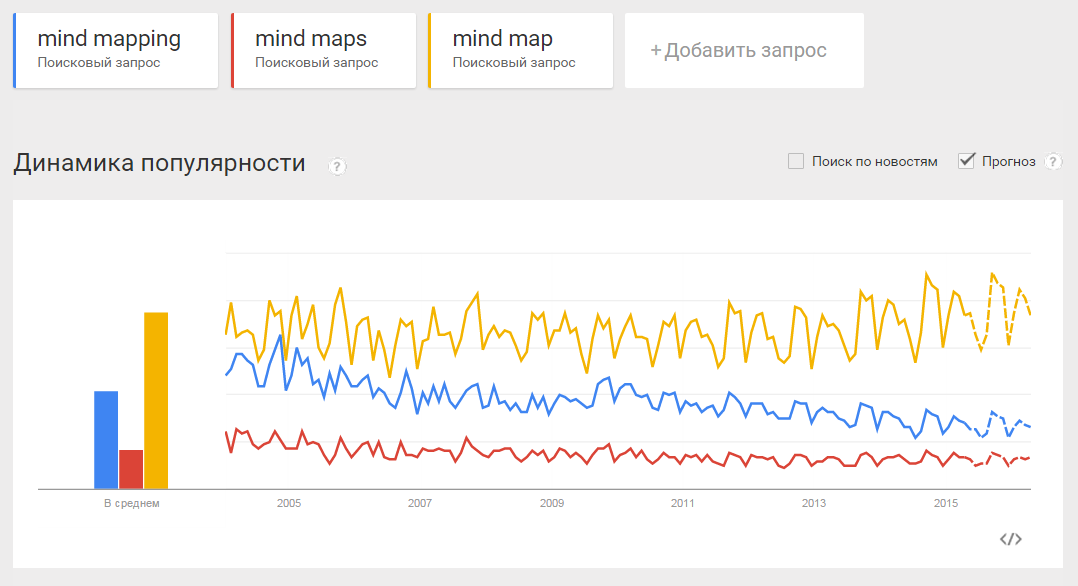
In general, mind mapping is a consistently used query over the past 11 years. The countries with the most such requests were suddenly Indonesia and Thailand. Completely different statistics in Russia. Only in 2011, this technique began to enjoy the interest in our country:
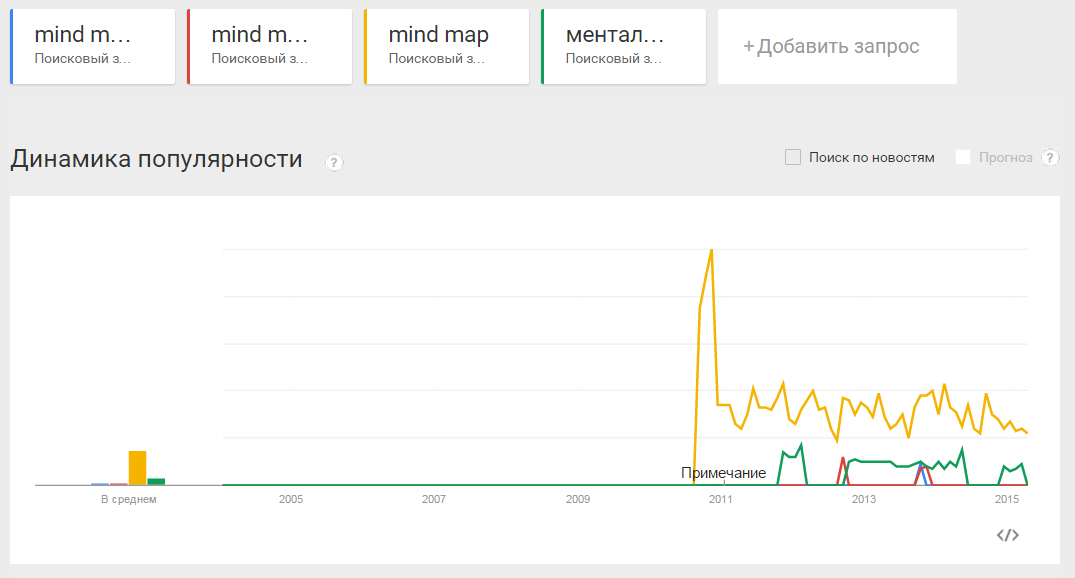
Why don't people use them everywhere?
Like everything else in our world, mental map techniques also have disadvantages:
- Complex, complex things are simplified , and many details are extremely generalized . It creates the appearance of order where it is not. Sometimes this is useful, but sometimes it only creates the illusion of control over the situation, the illusion of a common understanding of the problem and the absence of complex hidden interconnections.
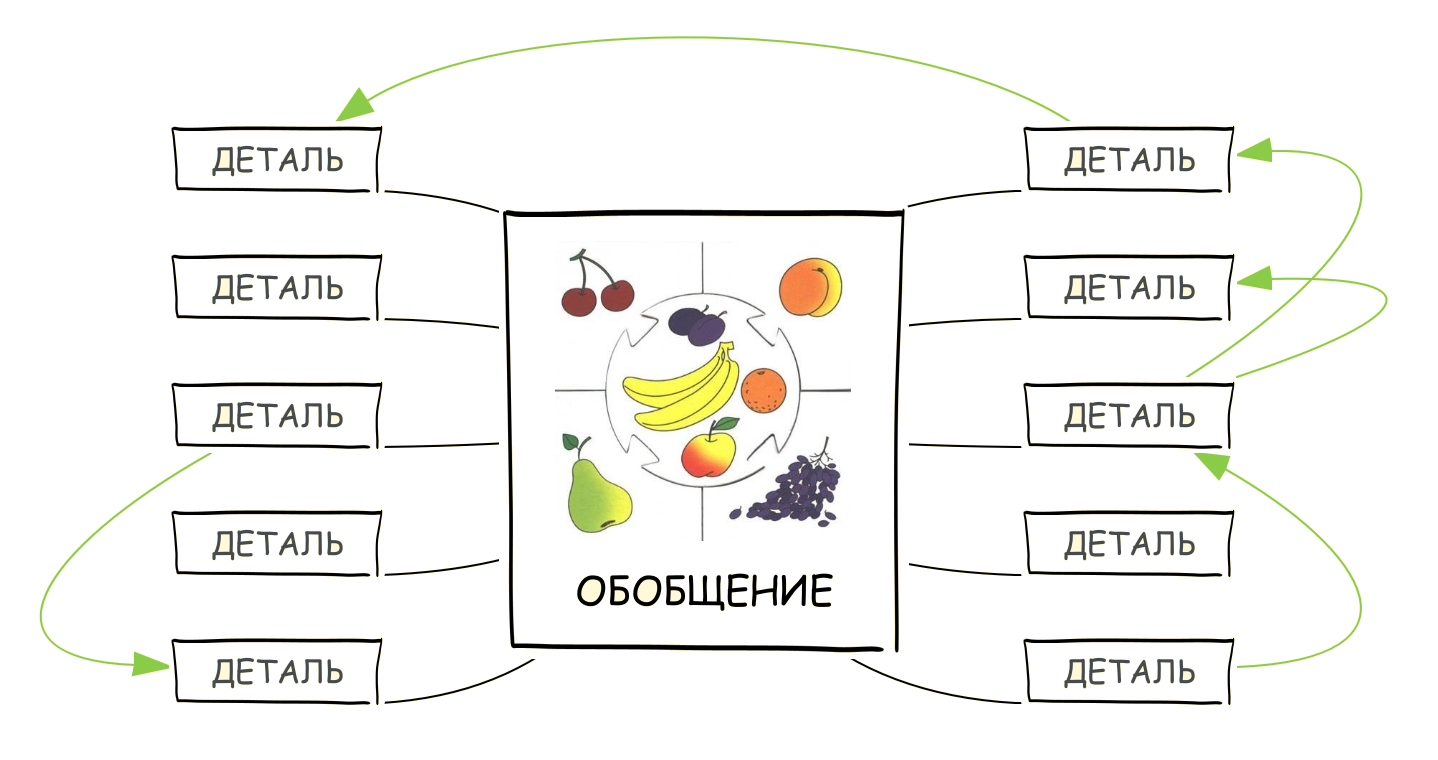
- Since the images are used in mapping, associative thinking is included. But associations are dynamic things that change and transform over time, and what caused one association six months ago does not cause exactly the same now. Such pictures direct the flow of thoughts when reading the map is not at all the other side, as originally planned. “False” associations ultimately slow down the understanding of the data on the map.

- The mental map is a reflection of one's thinking, or one person, the originator, or a group of such people, so the cards are often highly individual . If you give the card to read another person, it may happen that he either does not understand some of the details, or, even worse, misunderstand them.
- When processing large or complex data when building a map, you can get a complex picture , with multiple divisions, with a huge number of links, branches and keywords. The effectiveness of such a mental map falls at times.

This is one of the reasons why the technique of mental maps has still not supplanted linear records. But there are also imaginary flaws that lie in the way of applying this technique:
- Ignorance of technology . The popularity of mental maps has not yet reached such a scale that everyone knew about them.
- Opinion "I can not draw . " Many people believe that this is a serious obstacle to building a map, but in fact this skill is not required. Moreover, there is a simple exercise that helps to prove that everyone can draw a minimal set of characters. Try:

- The belief that this is childish fun and this professional is not what. In fact, every self-respecting professional has his own set of various tools for achieving goals: visualization, planning, time management and others. And the fact that many mental cards are used throughout the world is an indicator of the effectiveness of this tool.
- Mental maps take longer to do than linear recordings. At first, at the beginning of the application of this technique, this will indeed be the case - just like when teaching any new business. But in the future, the cards will click like nuts, much faster than regular notes.
- Persuasion “I think linear” and “All my life I use linear notes, and normal.” Yes, linear records come into our lives tightly from the age of seven, and then it is much more convenient and more familiar to use them, even in my own thoughts. But isn't this just a habit? And if other methods give greater efficiency, then why not try them?
- Opinion "Mental maps can not be used for everyday tasks ." On the contrary, this technique is applied to all areas of life where decision-making, any lists, analysis of something are required. This includes almost any area of our daily life.

How to create a mental map?
“Every artist was at first a lover”
To build mental maps, it is enough to follow certain simple principles. Let's try for example to make a mental map for this entire article.
First you need a clean horizontally rotated area, such as a sheet, board, tablet, phone, or a work area in graphic editors. The more data you process, the more work space you'll need. I will make my example using the online mental map editor.

In the center of the workspace, describe the image of the problem, task, or area of knowledge. In our case, this is an article about mental maps.

Remember to use drawings and symbols wherever possible. This will make the card more vivid and colorful, and as a result - more memorable.
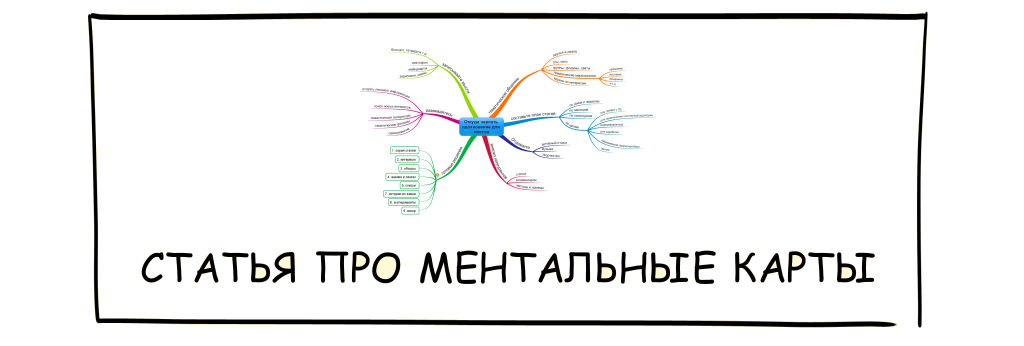
From the central image we lay thick structural branches, the main subsections of our article. It is recommended to use different colors for key branches and words, as well as colorize them. Since I love minimalism, I’ll get a little away from the rules.

But nothing prevents me from arranging the main subsections with the corresponding pictures. We also add the branches of the next level. It must be remembered that there should be only one word on one branch. This allows us not to overload the map, and in the process of inventing this one word, we can highlight the essence of the material.
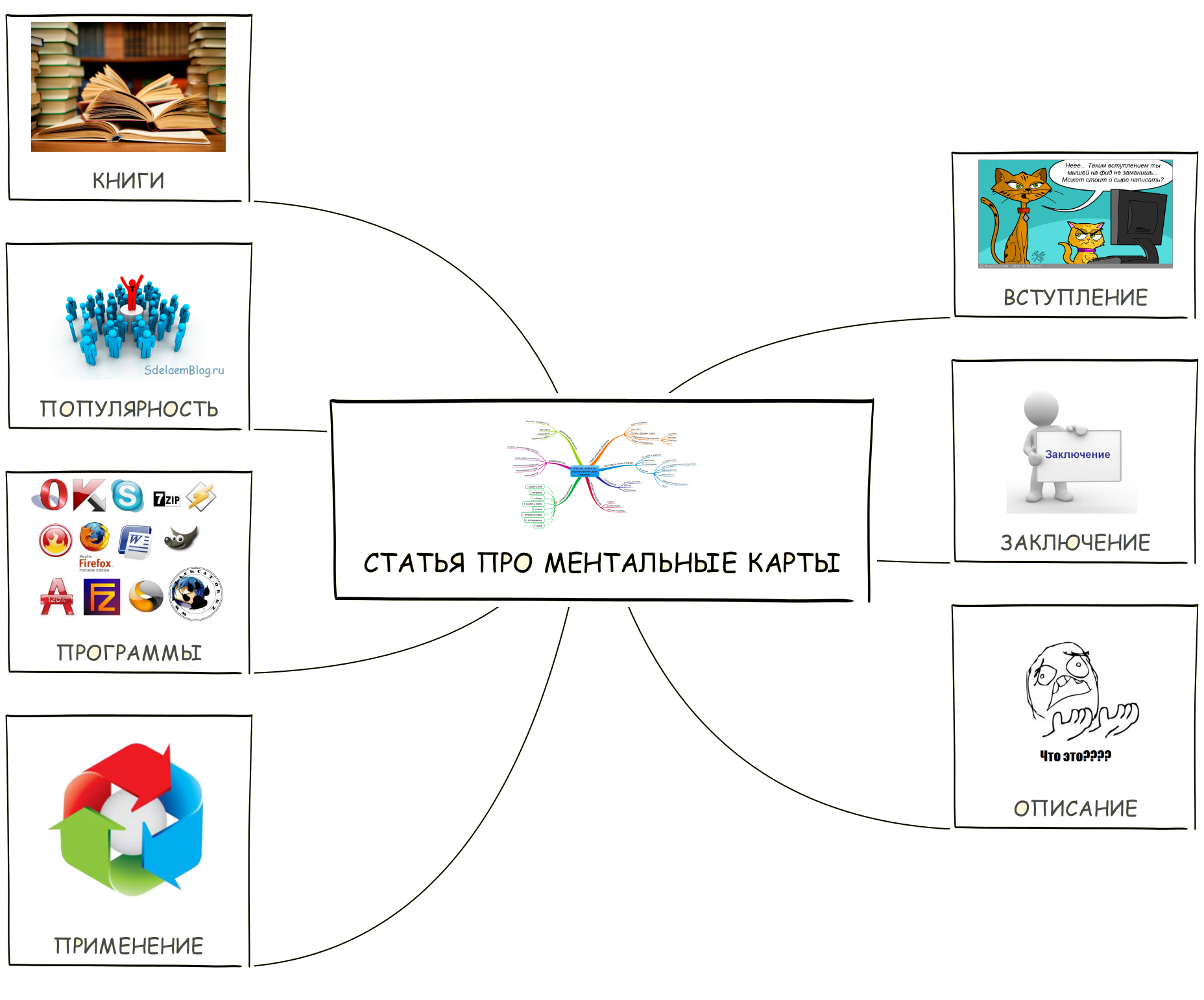
The size and thickness of the letters on the branches vary depending on the distance from the central image. The farther - the less. If there is a relationship between the details on the map - do not forget to show it. Let's add our example with other branches and links.
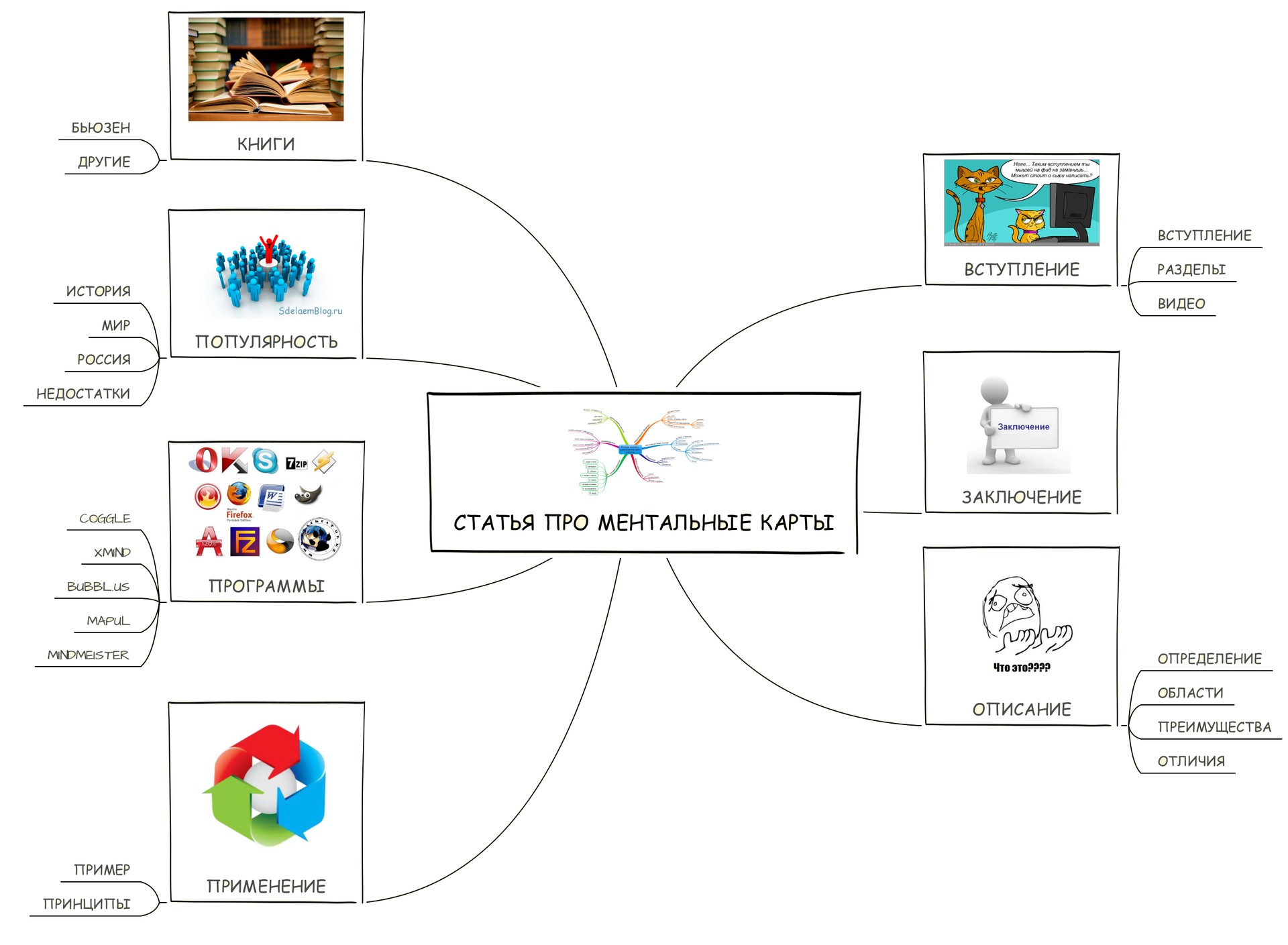
That was the finished mental map. Not the most colorful because of my love for minimalism, but very informative.
Are there any programs for creating mental maps?
Drawing freehand mental maps is a pleasure for an amateur, and sometimes it is much more convenient to insert a map on a computer. There are a large number of both online editors and programs / applications for building mental maps:
- Coggle is a simple and easy-to-learn online mental map editor.
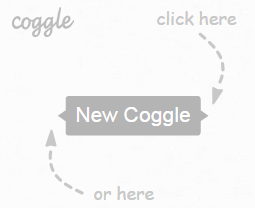
- XMind is a serious software for building both mental maps and other various diagrams.
- Bubbl.us - online editor and application.
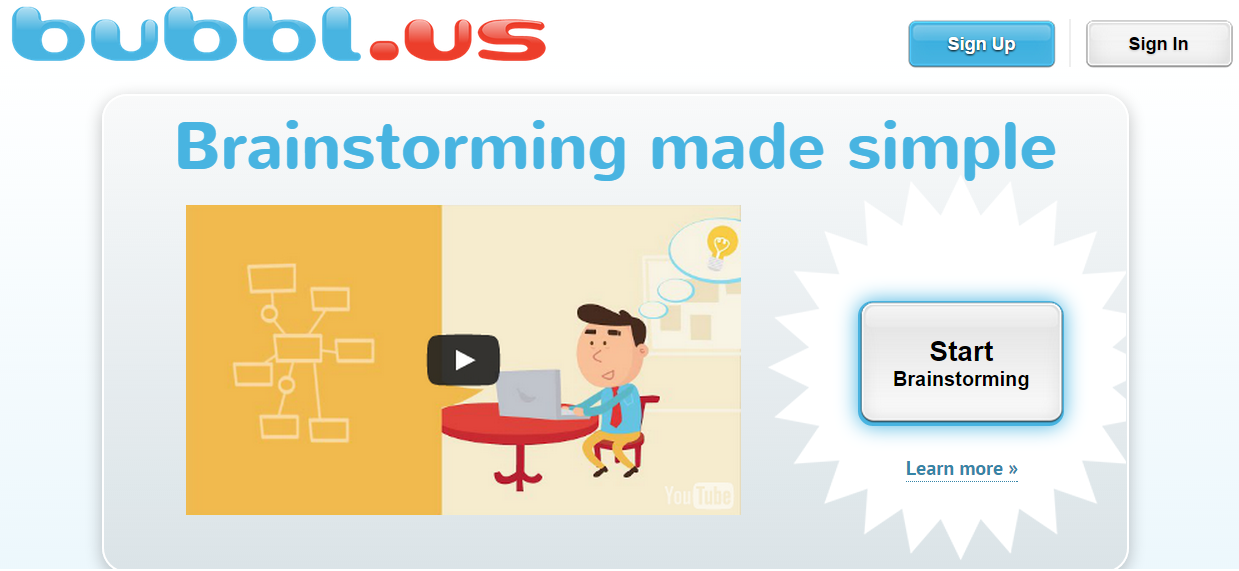
- Mindmeister is a very nice online map editor with lots of color themes, pictures, symbols and other features. It was he who was used to build mental maps in this article.

- Mapul is another online editor.
What to read on this topic?
Of course, it is best to learn about the methodology of mental maps from the source, so the best books to read are “Supermind” and “Work with your head” by Tony Buzan, as well as his other books.
Another informative book is “Visualize this! How to use graphics, stickers and mind maps for teamwork ”by David Sibbet.
Conclusion
Appearing in the 80s of the twentieth century, the method of mental maps continues to evolve and gain popularity throughout the world. She will help both with the decision of daily tasks, and with the purposes in the professional plan. It can be used both separately and together with the GTD method ( Getting Things Done ), using it for building various task maps. We can say with confidence that the list of tools for managing affairs, tasks and goals has been supplemented with another worthy and effective methodology.
Source: https://habr.com/ru/post/291028/
All Articles